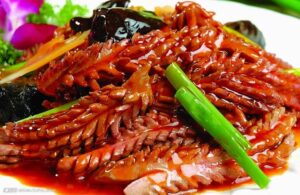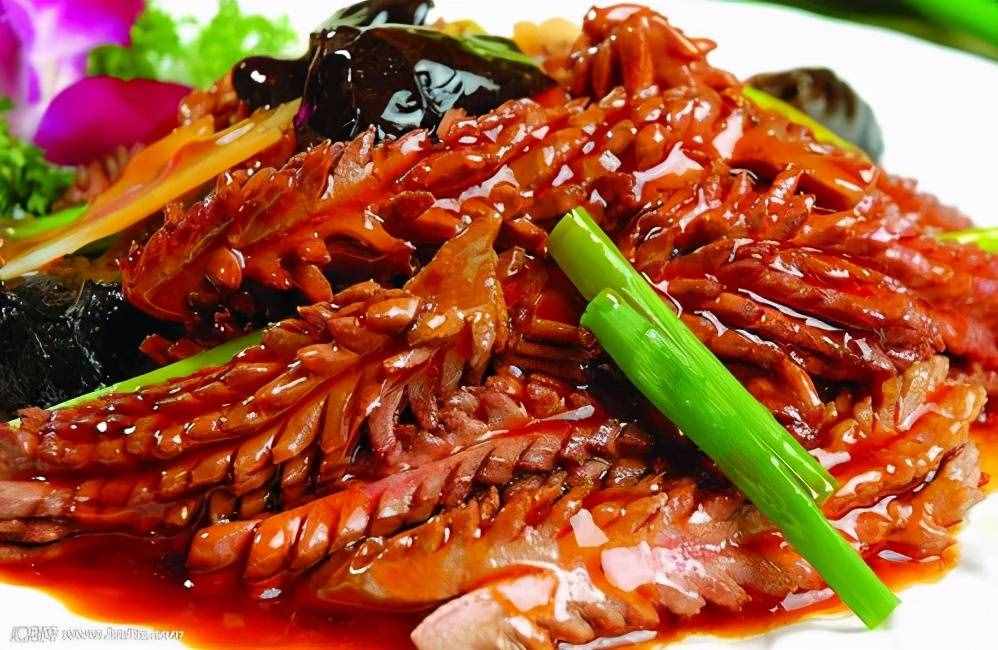Shandong cuisine, also known as Lu cuisine, is one of the traditional four major Chinese culinary styles (and one of the eight major styles) that is considered a spontaneous style, in contrast to the influential styles of Huaiyang, Sichuan, and Cantonese cuisines. It is the oldest, most skillful, and most prestigious culinary tradition in China, representing the culinary culture of the Yellow River basin.

Over 2,500 years ago, the Confucian scholars in Shandong laid the foundation for a Chinese culinary aesthetic focused on refinement, balance, and health consciousness. During the late Northern Wei Dynasty, the book “Qi Min Yao Shu” (compiled around 533-544 AD) summarized the culinary techniques of the Yellow River region, establishing the framework for Chinese cooking methods. During the Ming and Qing dynasties, a significant number of Shandong chefs and dishes entered the imperial court, elevating Shandong cuisine to a style known for its elegance, balance, and health-promoting characteristics.
Some classic dishes in Shandong cuisine include Yipin Doufu (One Pot Tofu), Tangcu Liyu (Sweet and Sour Carp), Congshao Haishen (Stir-fried Sea Cucumber with Green Onions), Sansi Yuchi (Three Shredded Fish Fins), Baiba Sibao (White-braised Four Treasures), Tangcu Huanghe Liyu (Sweet and Sour Yellow River Carp), Jiuzhuan Dachang (Nine-turn Large Intestines), Youbao Shuangcui (Double-crisp Fried Shrimp), Payuanke Baoyu (Braised Abalone in Shell), Youmen Daxia (Braised Prawns in Oil), Cujiao Yufu (Fish with Vinegar and Pepper), Zaoliu Yupian (Stir-fried Fish Slices in Fermented Rice Wine), Wenqiang Guipian (Stir-fried Eel Slices), Yuanbao Yudunjuan (Squid Rolls with Garlic and Chili), Qingtang Yiner (Clear Soup with Tremella Mushrooms), Muxurou (Wood Ear Fungus Pork), Jiaodong Four Delicacies, Tangcu Liji (Sweet and Sour Pork Fillet), Hongshao Daxia (Braised Large Prawns), Zhaoyuan Zhengwan (Steamed Meatballs from Zhaoyuan), Cunjian Bazirou (Stir-fried Shredded Chicken with Scallions and Chili), Tangjiang Jikuai (Sweet Sauce Chicken), Youpo Douteng (Stir-fried Pea Shoots in Oil), Shili Yinxing (Lychee with Osmanthus), Naitang Pucai (Milk Soup with Fungus), Wuyu Dantang (Blackfish Egg Soup), Guoshaoya (Pan-roasted Duck), Xiangsu Ji (Fragrant Crispy Chicken), Huangyu Doufugeng (Yellow Croaker and Tofu Soup), Basishanyao (Candied Sweet Potato), Mizhi Liqiu (Honey-glazed Pear Balls), Shaguo Sandan (Three Treasures in a Pot), Buda Ji (Buddha Jumps Over the Wall), Furong Jipian (Hibiscus Chicken Slices), Dun Furong Huangguan (Blanched Fungus with Osmanthus), Yangguan Sandie (Three Delights Under the Sun), Yuqian Xiaren (Shrimp with Clouds Before Rain), Wuyun Tuoyue (Dark Clouds Lifted by the Moon), Huangman Ji (Yellow Stewed Chicken), Guota Huangyu (Pot-flattened Yellow Croaker), Naitang Jiyu (Milk Soup with Crucian Carp), Shaor Er Dong (Braised Winter Bamboo Shoots), Taishan Sanmei Tang (Three Treasures Soup from Mount Tai), Cun Xishi She (Boiled West Lake Snakehead Fish), Saipangxie (Crab Cooked Two Ways), Hui Liang Jisilu (Two Shredded Chicken), Xiangyan Gedan (Pigeon Eggs with Cloves), Yunpian Hou Tou (Cloud Pieces and Monkey Head Mushrooms), Youbao Yuqin (Fish with Celery in Oil), Youzhai Quanxie (Deep-fried Scorpion), Xigua Ji (Watermelon Chicken), and more.

